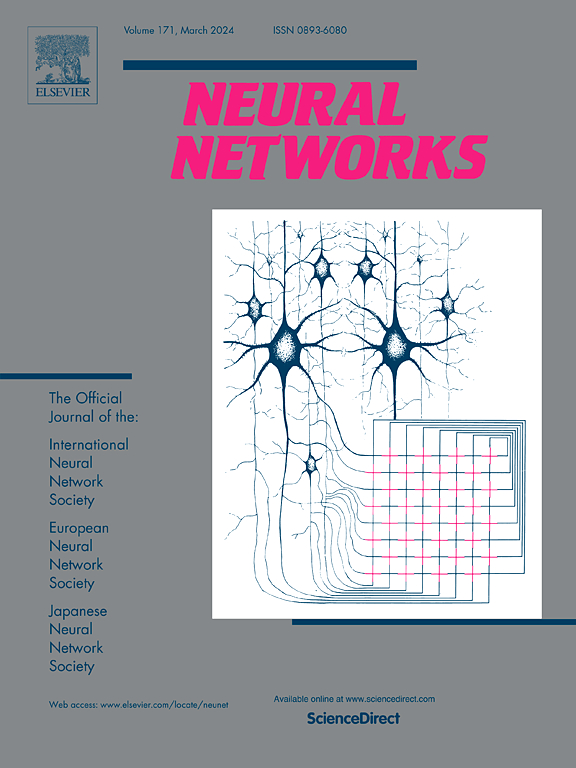Minimal sufficient views: A DNN model making predictions with more evidence has higher accuracy
IF 6
1区 计算机科学
Q1 COMPUTER SCIENCE, ARTIFICIAL INTELLIGENCE
引用次数: 0
Abstract
Deep neural networks (DNNs) exhibit high performance in image recognition; however, the reasons for their strong generalization abilities remain unclear. A plausible hypothesis is that DNNs achieve robust and accurate predictions by identifying multiple pieces of evidence from images. Thus, to test this hypothesis, this study proposed minimal sufficient views (MSVs). MSVs is defined as a set of minimal regions within an input image that are sufficient to preserve the prediction of DNNs, thus representing the evidence discovered by the DNN. We empirically demonstrated a strong correlation between the number of MSVs (i.e., the number of pieces of evidence) and the generalization performance of the DNN models. Remarkably, this correlation was found to hold within a single DNN as well as between different DNNs, including convolutional and transformer models. This suggested that a DNN model that makes its prediction based on more evidence has a higher generalization performance. We proposed a metric based on MSVs for DNN model selection that did not require label information. Consequently, we empirically showed that the proposed metric was less dependent on the degree of overfitting, rendering it a more reliable indicator of model performance than existing metrics, such as average confidence.
最小的充分观点:一个DNN模型用更多的证据进行预测,具有更高的准确性
深度神经网络(dnn)在图像识别中表现出高性能;然而,其强泛化能力的原因尚不清楚。一个合理的假设是,dnn通过从图像中识别多个证据来实现稳健和准确的预测。因此,为了验证这一假设,本研究提出了最小充分观点(msv)。msv被定义为输入图像内的一组最小区域,这些区域足以保持DNN的预测,从而代表DNN发现的证据。我们通过经验证明了msv的数量(即证据片段的数量)与DNN模型的泛化性能之间存在很强的相关性。值得注意的是,这种相关性被发现在单个DNN以及不同的DNN(包括卷积和转换模型)之间保持不变。这表明基于更多证据进行预测的DNN模型具有更高的泛化性能。我们提出了一种基于msv的DNN模型选择度量,该度量不需要标签信息。因此,我们的经验表明,所提出的指标较少依赖于过拟合的程度,使其成为比现有指标(如平均置信度)更可靠的模型性能指标。
本文章由计算机程序翻译,如有差异,请以英文原文为准。
求助全文
约1分钟内获得全文
求助全文
来源期刊

Neural Networks
工程技术-计算机:人工智能
CiteScore
13.90
自引率
7.70%
发文量
425
审稿时长
67 days
期刊介绍:
Neural Networks is a platform that aims to foster an international community of scholars and practitioners interested in neural networks, deep learning, and other approaches to artificial intelligence and machine learning. Our journal invites submissions covering various aspects of neural networks research, from computational neuroscience and cognitive modeling to mathematical analyses and engineering applications. By providing a forum for interdisciplinary discussions between biology and technology, we aim to encourage the development of biologically-inspired artificial intelligence.
 求助内容:
求助内容: 应助结果提醒方式:
应助结果提醒方式:


